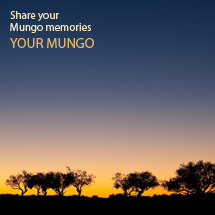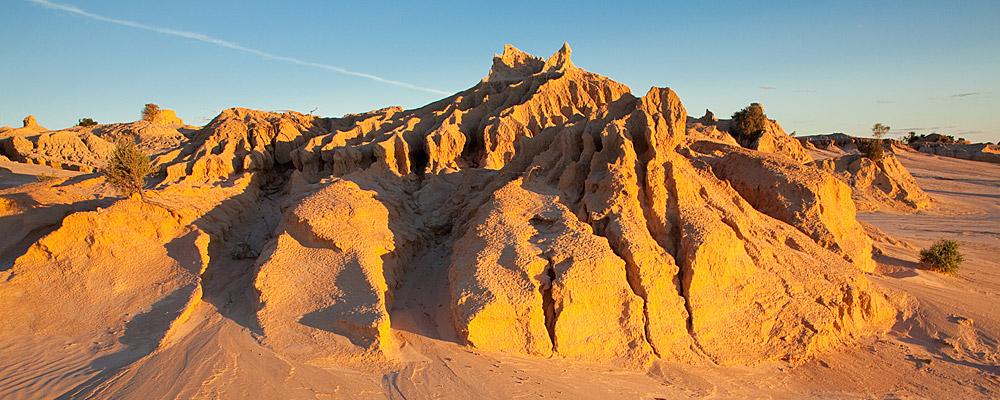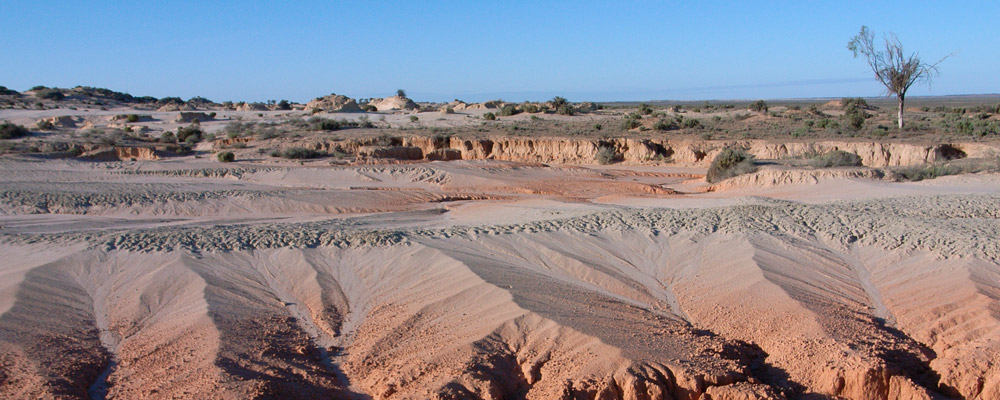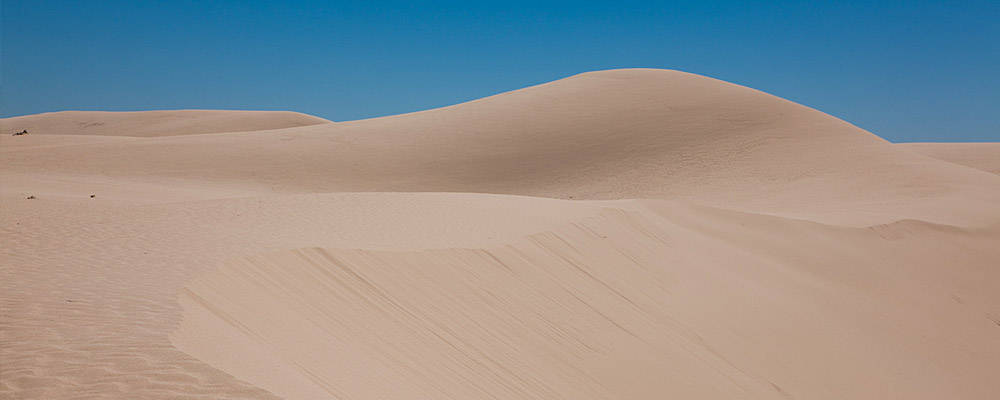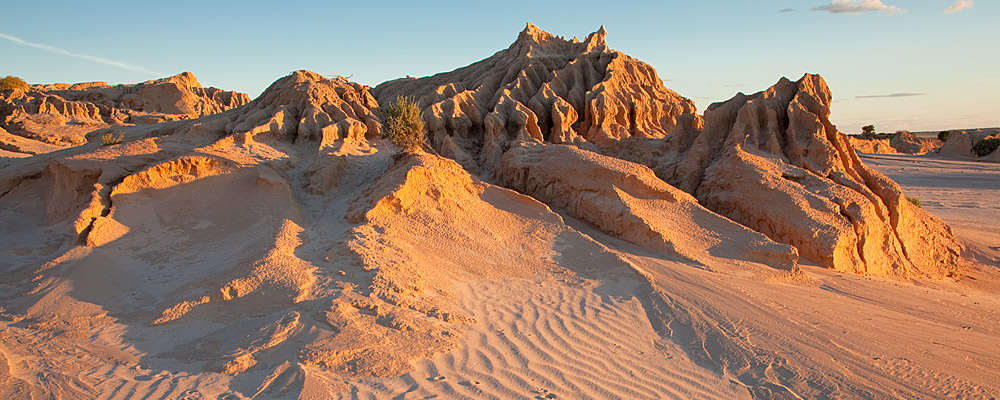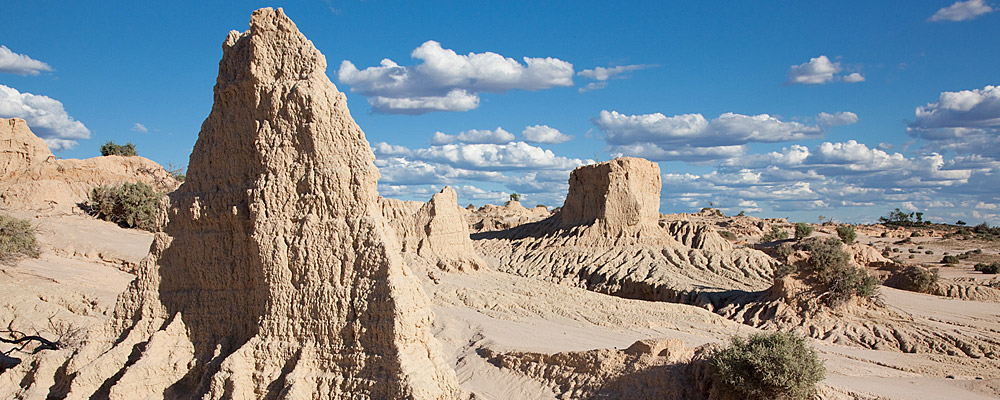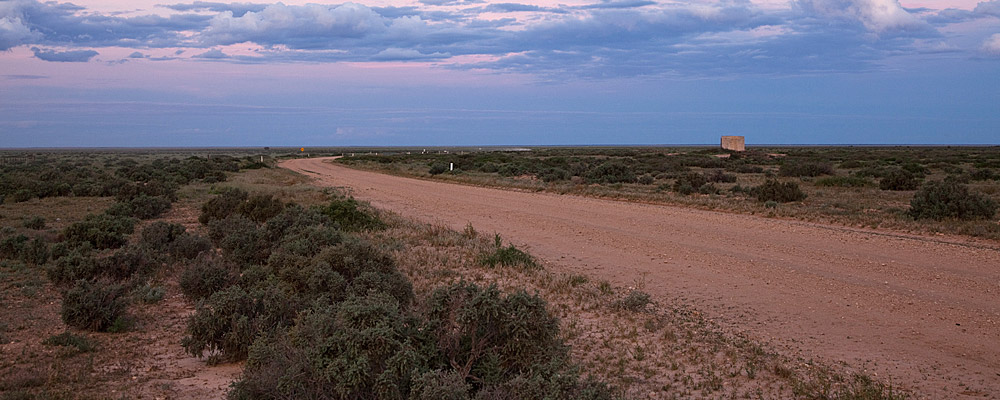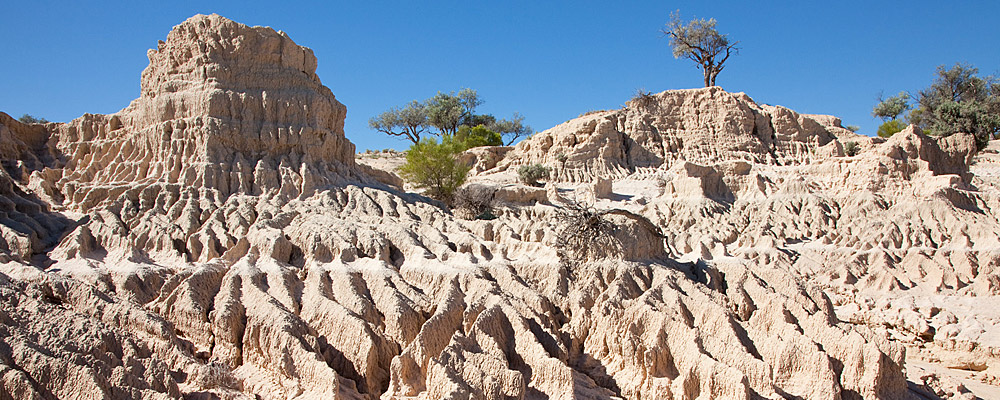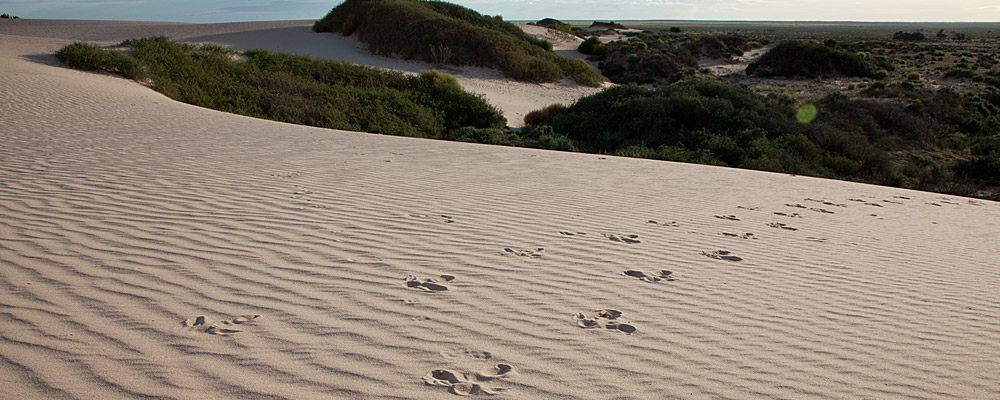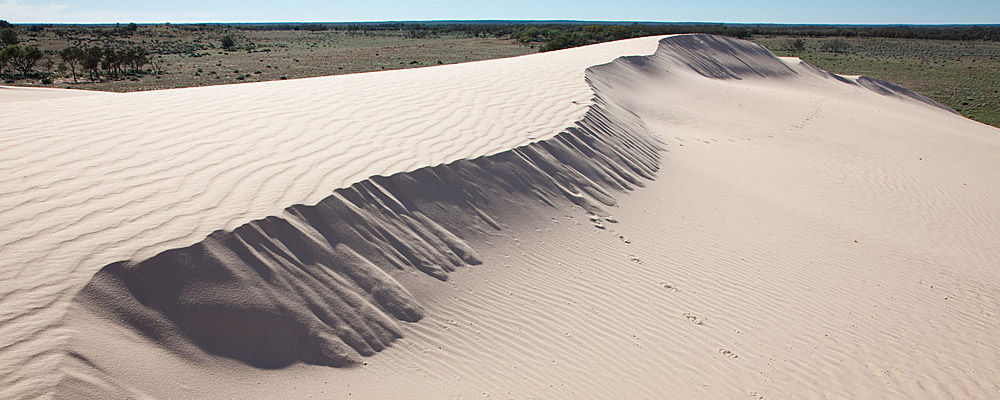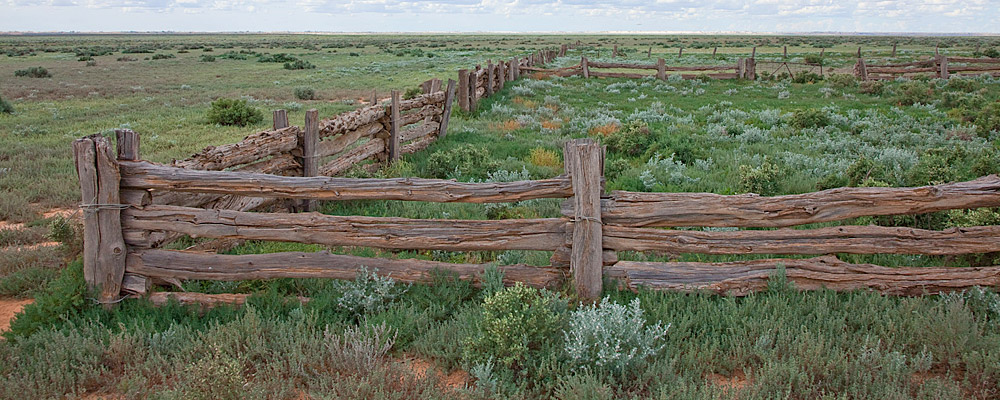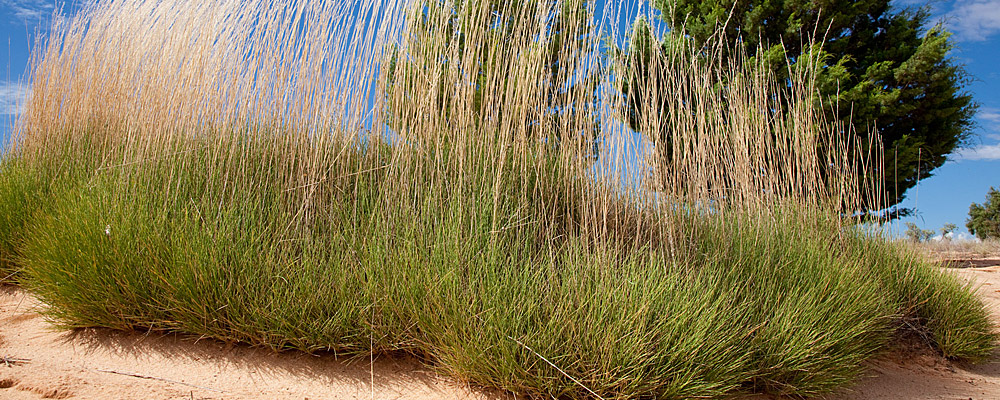Understand Mungo
Looking After Mungo
Mungo National Park and the Willandra Lakes Region World Heritage Area need to be carefully looked after to protect and present their special values into the future. A detailed management arrangement is in place to carry out this difficult job. It involves several government agencies, Aboriginal people, landholders, scientists, local councils and others in a cooperative effort.
Downloads:
Managing Mungo National Park
The NSW National Parks and Wildlife Service (NPWS, part of the Department of Environment, Climate Change and Water, or DECCW) is the government agency with the legal responsibility for the management of Mungo National Park, through local staff. Management is guided by the Mungo National Park Plan of Management (2006) a legally-binding document that sets out management issues and priorities. The plan of management is consistent with World Heritage management requirements.
Key priorities include the protection of cultural heritage (including European pastoral heritage), control of weeds and feral animals, fire management and providing opportunities and information for visitors.
Much of Mungo National Park is also part of the Willandra Lakes Region World Heritage Area, which brings additional management responsibilities.
Park management is overseen by the Joint Management Advisory Committee for Mungo National Park. This committee is made up as follows:
five representatives (5) from the Paakantji and Ngiyampaa people of the Traditional Tribal Groups Elders Council;
- one senior NPWS official;
- one representative of Environment Australia (Australian Government agency with responsibility for World Heritage);
- one park neighbour;
- one representative of a peak conservation group;
- one representative of Balranald Shire Council; and
- one representative of Wentworth Shire Council.
Aboriginal involvement
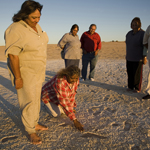
The Aboriginal Ownership Act provides for full joint management of Mungo National Park by traditional Aboriginal custodians. However the traditional tribal groups have decided not to pursue full joint management at this time. The Paakantji, Ngiyampaa and Mutthi Mutthi were identified during extensive community consultation as the three tribal groups who have traditional associations with the Willandra Lakes region.
Rather than 'divide' the World Heritage Area up on a tribal basis, the three groups developed a concept of 'shared heritage' and agreed that management decisions were the business of all three tribal groups. They established the Traditional Tribal Groups Elders Council as a body to coordinate Aboriginal involvement with the park.
In 2007 the Mutthi Mutthi people decided that they would not be involved in the Elders Council and Joint Management Advisory Committee. The Mutthi Mutthi continue to be involved in other aspects of the park.
Four highly respected Aboriginal women had a pivotal role in the early days of Mungo National Park. They helped to establishing the involvement of the three traditional tribal groups and more respectful procedures for dealing with ancestral remains. Today, local Aboriginal people value and remember the struggle and the contribution of the 'four Aunties':
- Alice Kelly, a member of the Balranald based Mutthi Mutthi people, was a member of the NPWS Lower Darling Regional Advisory Committee for many years.
- Alice Bugmy, a Paakantji Elder from Broken Hill, was a representative for the Western Regional Aboriginal Land Council.
- Tibby Briar, a Paakantji Elder from Dareton, was also a representative for the Western Regional Aboriginal Land Council.
- Elsie Jones OAM, a Paakantji Elder from Wilcannia, had a keen interest in educating children about her culture.
Managing World Heritage
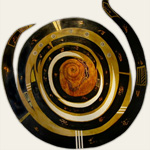
The Willandra Lakes Region World Heritage Area takes in most of Mungo National Park and a larger area of leasehold land that is mainly used for grazing. As signatory to the World Heritage Convention, the Australian Government is responsible for protecting, conserving and presenting the World Heritage values of the area, while the NSW Government and leaseholders are responsible for day-to-day management.
The responsibilities of the various groups are set out in the Willandra Lakes Region World Heritage Area Plan of Management (1996). The plan of management is a strategic document that also contains broad management guidelines for the World Heritage Area.
Management of the World Heritage Area is advised by two committees: the World Heritage Area Community Management Committee and the World Heritage Area Technical and Scientific Advisory Committee. NPWS is represented on both bodies. The traditional tribal groups provide input and representation to the Community Management Committee through the World Heritage Area Elders Committee.
